Breaking Locks in the Archive
- 2nd February 2022
Have you ever wondered what archivists have to do when they come across a locked record?
Whilst part of the archive’s remit is to preserve our deposits in their entirety, it is equally part of an archive’s job to provide access to said materials; and in occasional circumstances, it is difficult to reconcile these responsibilities completely. In no instance is this issue more apparent than when we come across a locked record.
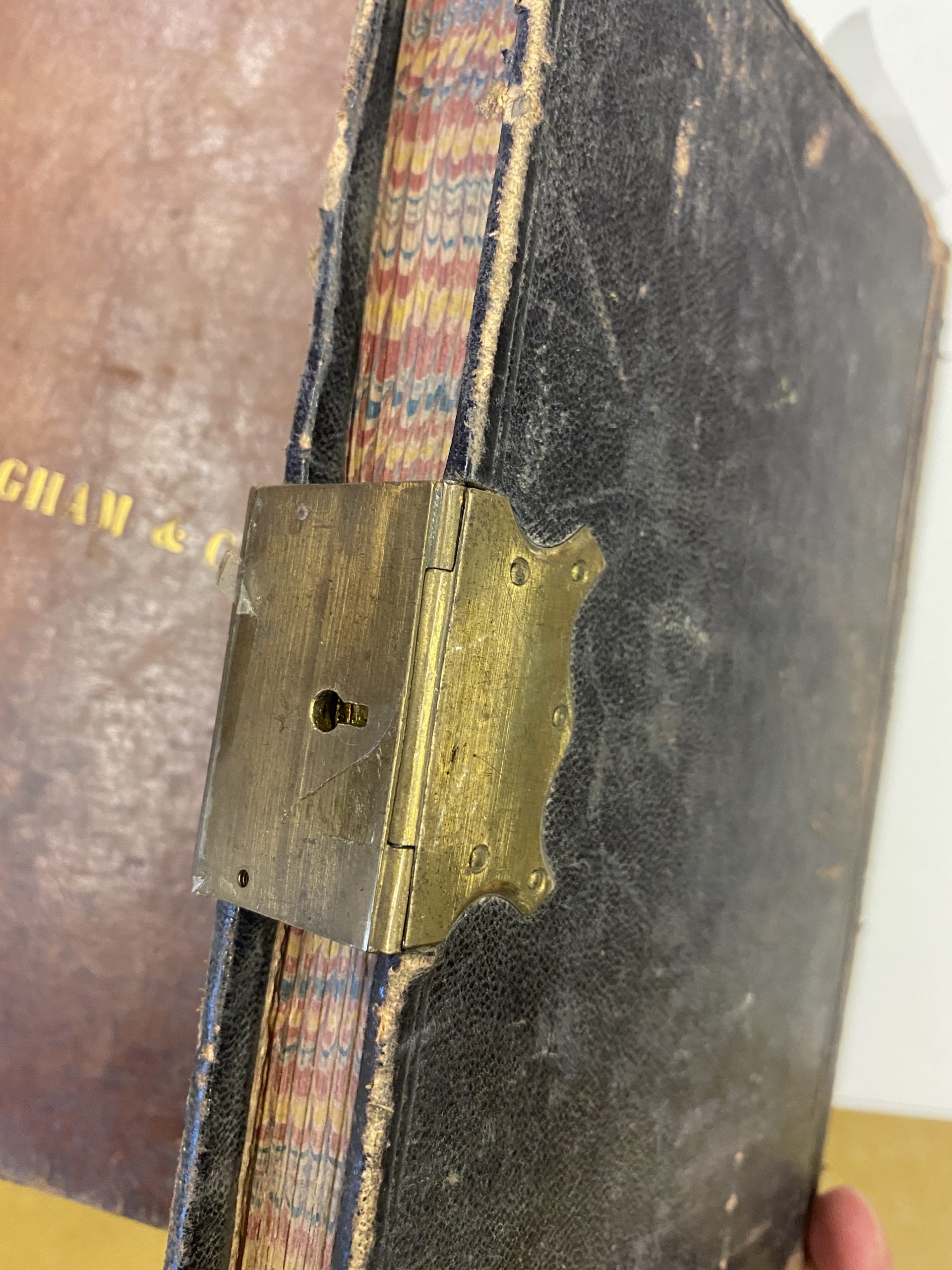
A number of volumes like this one were found in a deposit we’re currently in the process of cataloguing here at the Hive – all thick, leatherbound tomes with brass clasps connected to a closed lock.
What we believe we have here is what is sometimes referred to as a ‘box lock’, or a ‘lever box lock’, which more refers to the fitting of the lock to the item than it does to the mechanism of the lock itself. The lock is fastened to the faces of the volume and wraps around, rendering it unopenable.
It seems as though the depositor had already made an attempt to disable the locks themselves at some point, stuffing the latch with tissue paper or covering it with tape to prevent the clasp closing. However, at some point, any amount of pressure has been applied and forced the locks shut.
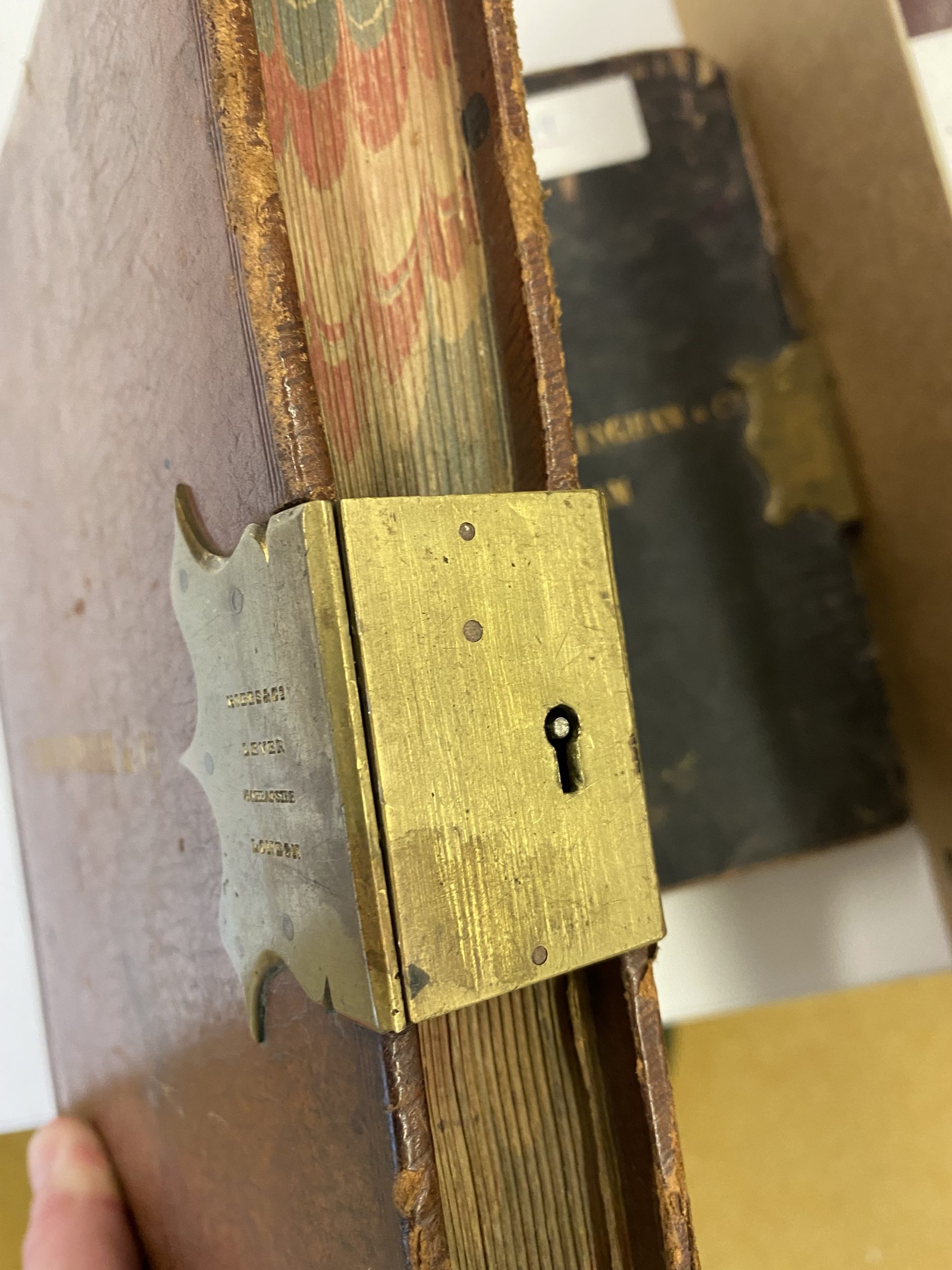
These volumes likely would have been shop bought, rather than bespoke, and as such the locks themselves were mass produced. In instances such as these this means that a single key may be compatible with hundreds or thousands of renditions of the same lock. The purpose was not to fortify highly sensitive documents, but simply to keep prying eyes away from the pages of the record – in this instance a general financial ledger – and in most cases, the requirement of a generic key was enough of an inconvenience to do this.
Lucky for many archivists, then, this means that old keys will open many locks. Many archivists and conservators will have a collection of such keys, and as this collection grows the number of permanently locked records will (hopefully) diminish. Unlucky for us, however, we did not have a compatible key for these locks, and had to look towards other methods of getting into the records themselves. Having consulted with other heritage professionals, the advice I was offered ranged from outright removing the lock from the book, to picking the lock with the classic and as-seen-on-TV likes of a hairgrip or a paperclip.
On the one hand, lockpicking is difficult, a scarce skill, and not regularly provided as training to archive or heritage professionals, though perhaps now we should add it to the training roster. Alternatively, removing the lock entirely before unlocking it has the potential to do serious damage to the internal contents, or at the very least, the covers, as a bound lock such as this is – perhaps unsurprisingly – designed so that it is not easily removed. The fastenings have been riveted in and so cannot be unscrewed.
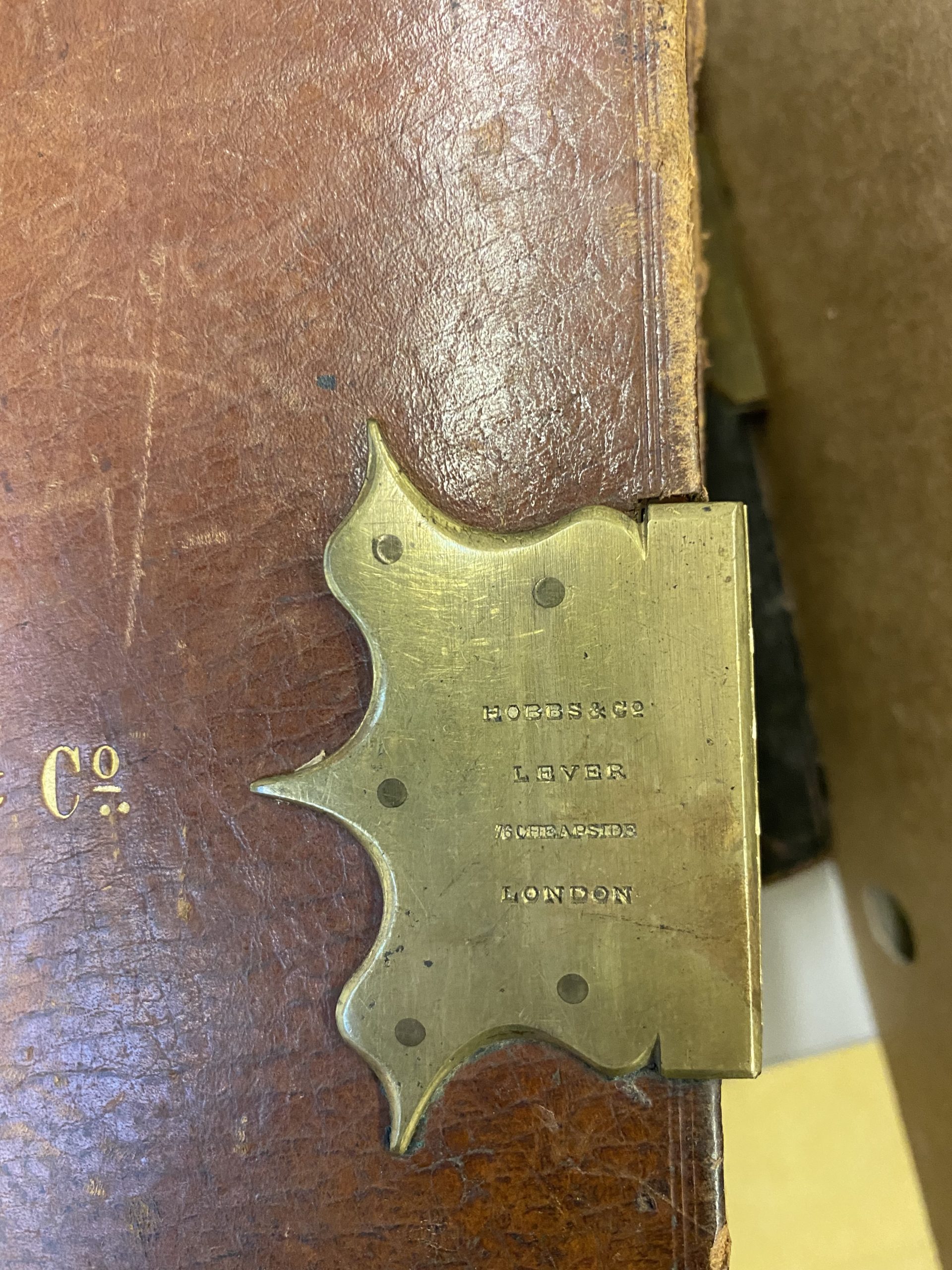
Whilst it is of course most desirable for us to avoid the risk of inflicting any sort of damage at all to the original item, what we have to consider is that to completely preserve the record, in this instance, would also be to ensure that it is inaccessible to anyone at all.
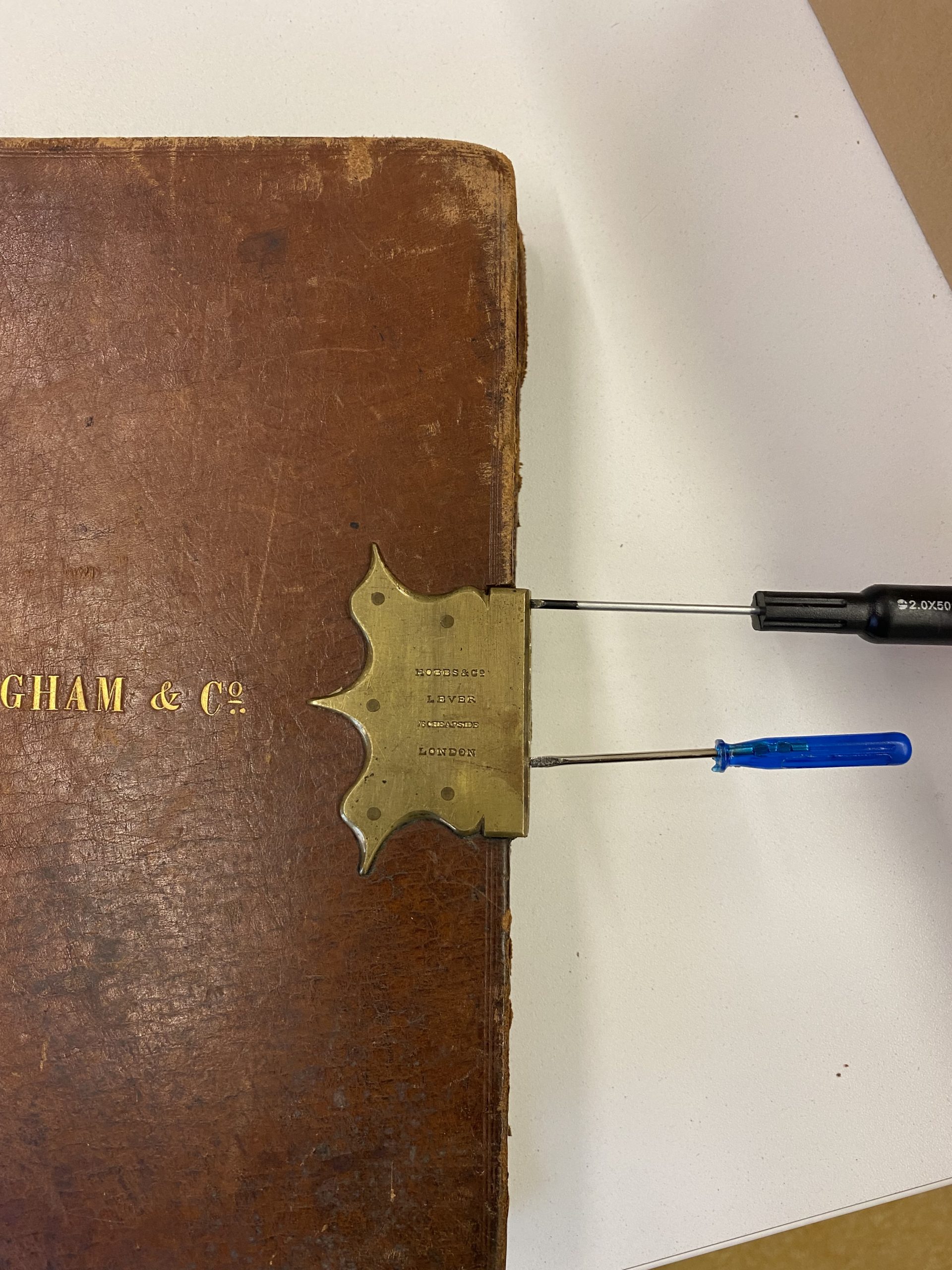
The option most viable, then, was applying a bit of brute (but not too brute) force to the latch. Using a set of small screwdrivers and a rubber mallet, we were able to force open the lock without sustaining much damage to the record.
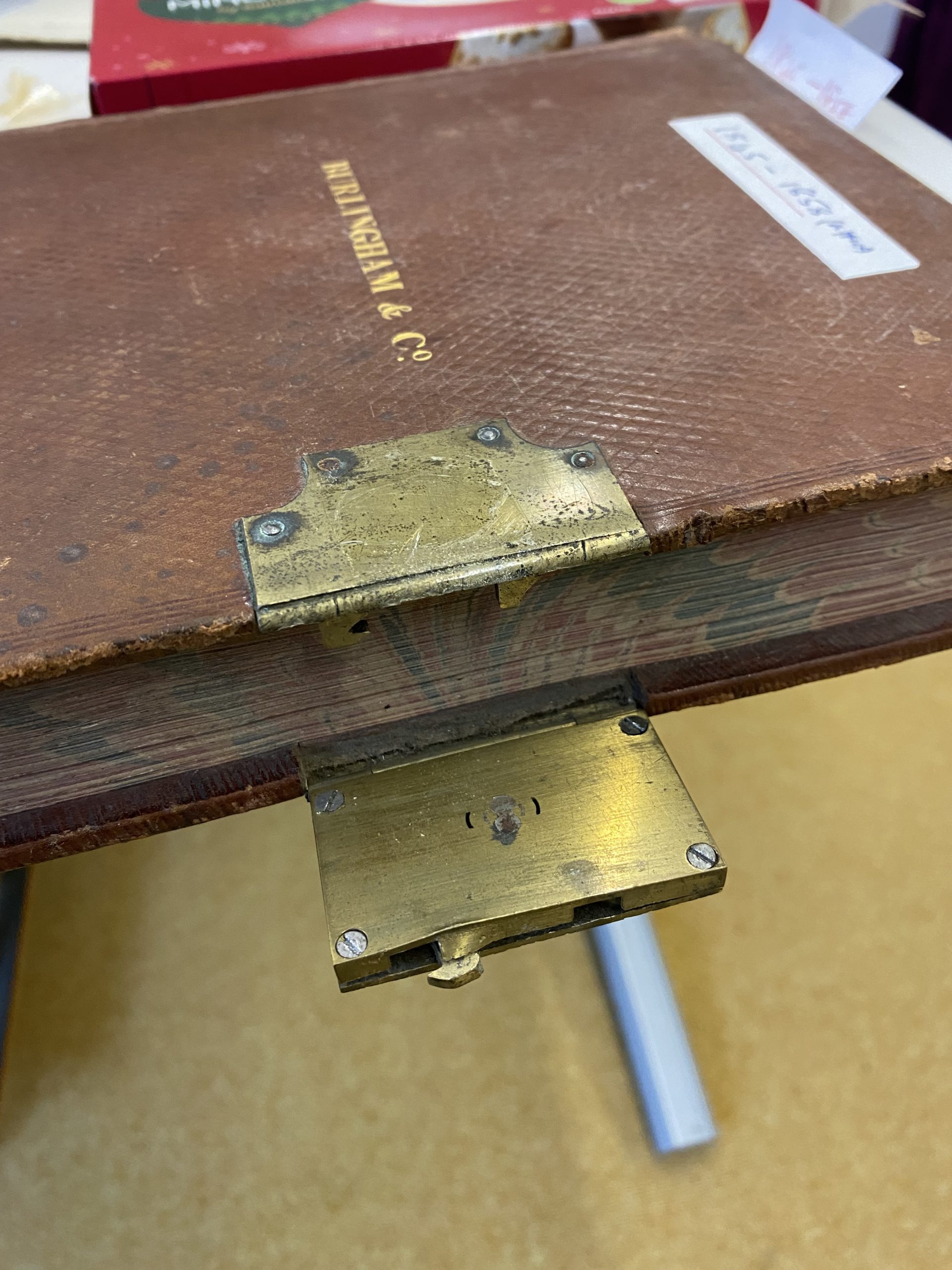
We’ve been asked what it was that they were wanting to keep from prying eyes. The answer is fairly disappointing, I’m afraid – they were a series of general ledgers, belonging to a coal merchant. Just cash figures which mean very little now. Yet for some reason they decided to have a volume with a lock on!
Disclaimer: We do not condone the use of lockpicking or lock breaking in unpermitted circumstances!!!
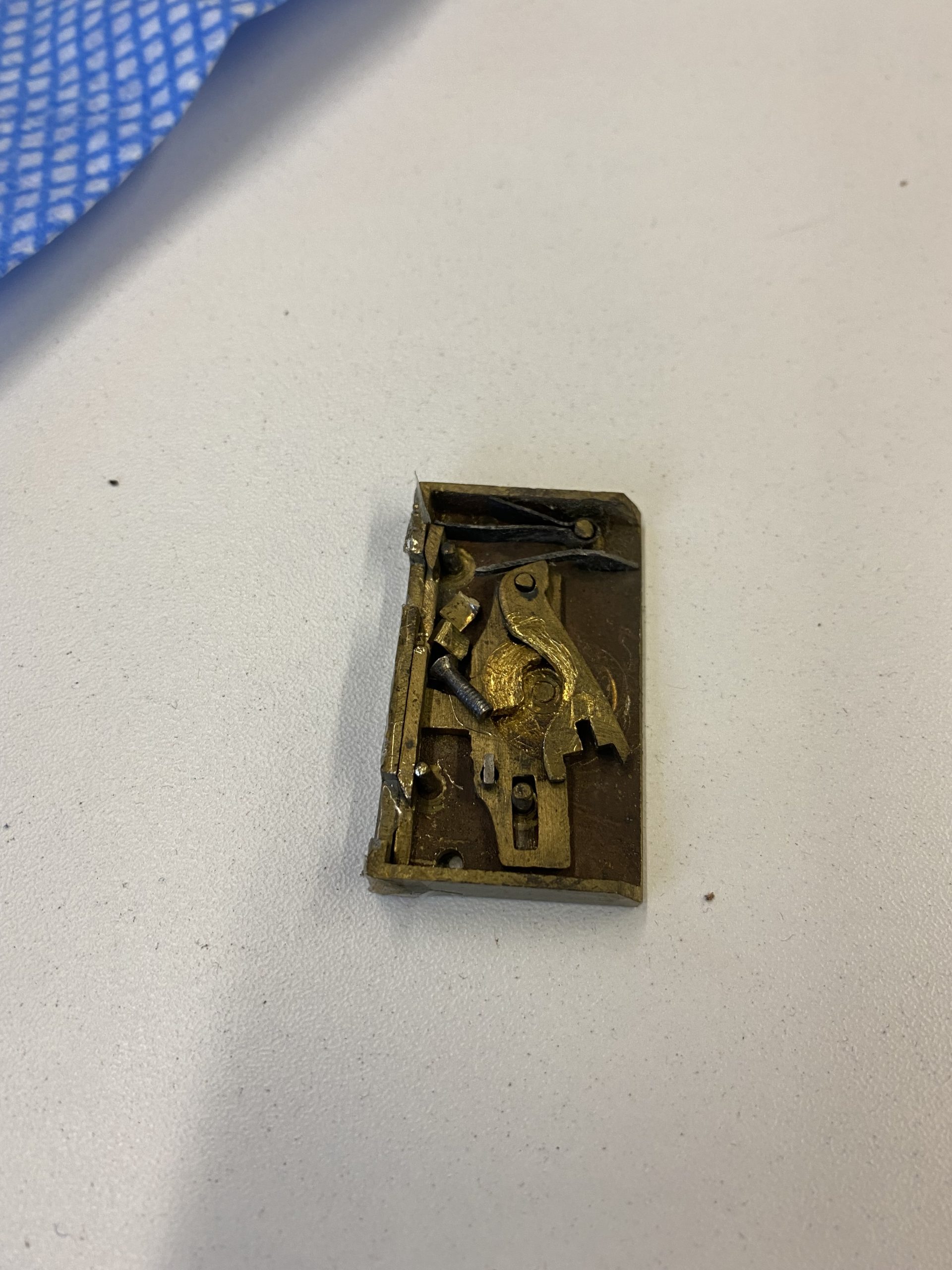
Post a Comment